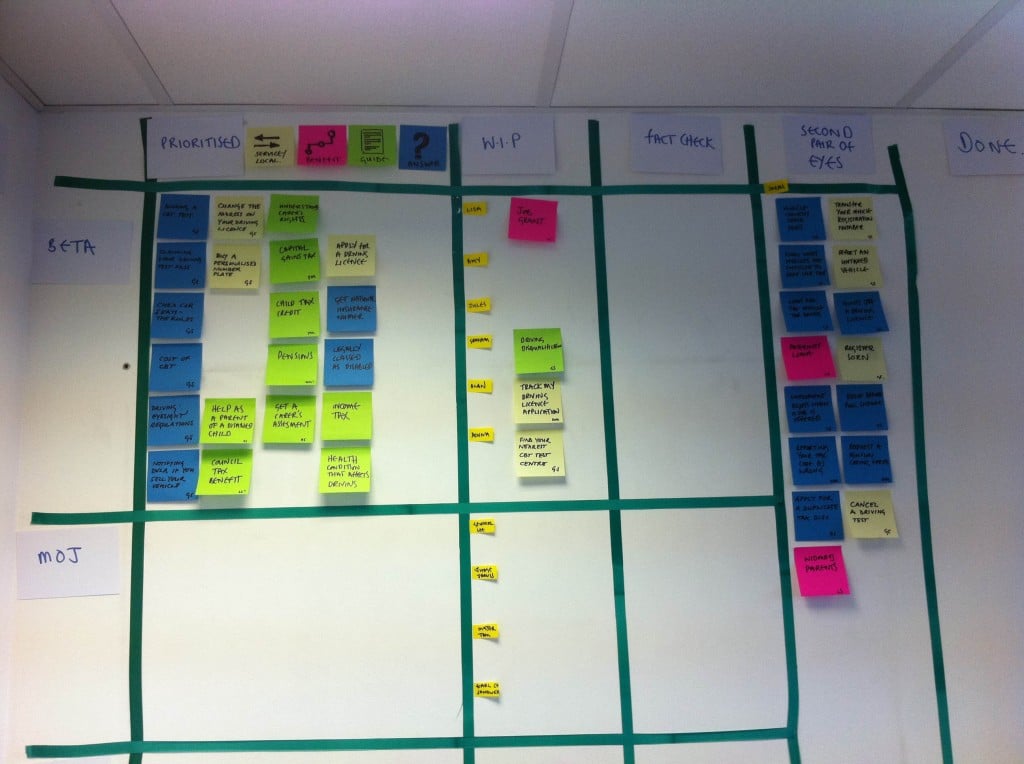At 9h.03m.9s on 31 Jan GOV.UK, the beta version of the UK Government's single domain project, was released to the public for the first time. I was the Delivery Manager on the project and it feels like an awesome achievement and I am very proud to have been part of it.
I think we've delivered a slick product. It's beautiful (imo), reduces obfuscation, is task focused on user needs and uses search based architecture rather than browse hierarchies. It's only a start and there is so much more to do but early feedback on Twitter and GetSatisfaction has been extremely encouraging so far.
Also, unusually for UK Government IT projects it came in on time and slightly under budget which is testament to the skills of the team, our iterative approach and (cough) careful management. More on that in another post.
Most gratifying is that we've been given permission (or did we just seek forgiveness?) to develop this project out in the open. From the beginning we've been tweeting and blogging about our emerging thinking and code has been available for public scrutiny on GitHub. Only this week the first member of the public made a pull request, made some changes to the code, committed and we deployed the same day. This is fundamentally changing the way Government IT works.
The Government Digital Service (GDS) is a new organisation within the Cabinet Office. It's exciting times, with some commentators saying its like having the coolest start-up at the heart of government. I can confirm it feels like this from the inside too. It's been an amazing journey so far and I know we're only just beginning to crank it up.
Related links
- Launch announcement, with day 1 and day 2 iterations based on feedback
- Some personal photos and screen shots from the project
- Storify of the launch
- GetSatisfaction feedback, @GovUK on Twitter







